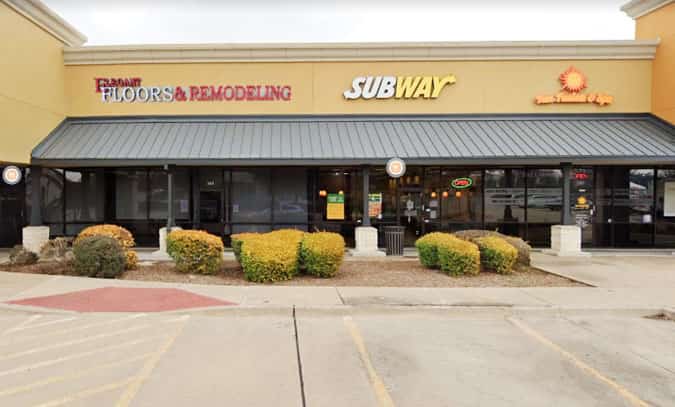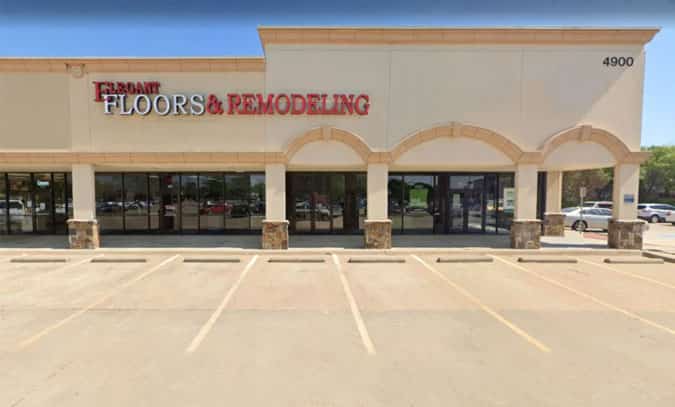Engineered flooring is a type of flooring made from the base material of real wood, but also from plywood or high density fiber and a veneer glued to its base. If you are about to change or renovate your flooring, we tell you all about Engineered wood floors in Prosper and its main advantages.
What is engineered flooring?
An engineered floor is a solid wood floor that is cut through its thickness and glued to a more stable element which is ideally a high-quality plywood product. This floor is designed this way to withstand greater variations in humidity to achieve greater floor stability. This is especially useful in areas where humidity or heat is a problem for a hardwood floor.
The top layer of an engineered flooring strip is strong and is usually made of hardwood. Its thickness varies between 2 and 6 mm depending on the designers of engineered wood flooring.
It is in particular thanks to the thickness of the hardwood surface layers that the floor can withstand a large number of standings and various maintenance behaviors.
Laminate or Engineered Wood Flooring Prosper ?
Engineered flooring planks are different from laminate or veneer planks. The big difference is that the main surface of the laminate floor has a layer of real wood, while the engineered floor consists only of a thin layer of wood on its upper part and a lower layer against plated not visible.
While laminate hardwood flooring can add value and character to an interior, many homeowners are not ready to put up with the thought of paying great attention to the care of a hardwood floor. Floor coverings such as laminate and Engineered Wood Prosper provide a good alternative to a very solid floor covering that is easier to maintain and preserve.
The advantages of Prosper engineered floors
There are huge advantages and benefits of Prosper engineered floors, such as:
Stability
Because hardwood flooring tends to swell, warp, or split from heat and humidity, engineered flooring solves these problems. Thanks to the multilayers of its slats which counteract the effect of torsion, it remains flat and intact.
The properties of engineered wood make it the best choice for installation near heating sources, on concrete or in a humid environment.
The appearance
Compared to a rough wood floor, an engineered floor will retain all of its natural beauty longer and with less maintenance. Because its top layer is made of real hardwood, it offers a raw aesthetic rendering with the majority of natural wood species.
It is found in various appearances which are the result of different ways of sawing wood: on slab, rotary cut or slice.
Sandblasting
Depending on the thickness of the wood veneer, the engineered floor can be sanded. Thanks to the current high quality finishes and the manufacturing processes through which a floor passes, the damage is often all repairable, especially by flooring professionals.
Engineered wood is currently, and this all over the world, the type of wood most used in interiors for its strength, its aesthetic appearance and its easy maintenance.
Current technology allows in particular the production of slats or boards much wider and accessible to the application of an immense variety of varied and really interesting finishes.
Solid Wood or Engineered Wood Floors Prosper?
It all depends on how you plan to use it. Engineered hardwood floors are made from chipboard of high density fiberboard with a thin top layer of hardwood. This manufacturing process improves the stability of the floor and is ideal for damp areas like basements or any place with a concrete slab, as is often the case in condos.
Elegant Floors manufactures Engineered Wood Floors Prosper in white oak and maple, but also offers the following types: walnut, cherry, ash, acacia and hickory.
Engineered hardwood floors offer interesting advantages over solid wood floors: they are more stable to humidity and can be installed as a floating floor. However, they are thinner than solid wood floors. Solid wood should therefore last a little longer because it will withstand more sanding than engineered wood.
Here are some recommendations.
Characteristics of hardwood
Solid wood flooring cannot be installed floating. It should be nailed or stapled over an existing wood subfloor, usually plywood. Additionally, solid wood should not be installed on a floor below grade. Indeed, solid wood reacts more to variations in humidity.
In summer, if the basement is very wet, the wood can swell and crush its fibers laterally causing the planks to corrugate. In winter, in dry weather, spaces could appear between the boards.
Engineered wood flooring offers greater versatility. It can be nailed, fully glued or installed floating (with adhesive on the tongue and in the groove). A floating floor offers important advantages:
- It is an economical solution for basements or condominiums
- By placing it on an acoustic membrane it makes it possible to soundproof floors against foot impact noises.
Grade aesthetics
When choosing a hardwood floor (hardwood), the selection of species and grade is first and foremost a matter of personal taste. All floors are hard enough to withstand normal residential use. Each species of wood and each grade of the same species will give your floor a different appearance.
In general, lower grade woods will be just as hard but will be more uneven in their natural color and exhibit more visual characteristics such as knots and mineral concretions.
Hardness and wear resistance
The hardness of the wood determines its resistance to the wear of the steps. This hardness is established according to a wood hardness chart.
As previously mentioned all commercial hardwoods are generally sufficient for residential use. However, in busy places or if you have a very large dog, it may be worth choosing a type based on its hardness to be more resistant to claws or small rocks that sometimes get stuck under shoes.
Choice of Color: Natural or Tinted?
In general, preferably choose a natural shade. Natural shades don’t go out of style so you don’t have to re-stain it to match your new furniture or wall color.
However, if you are looking for a particular shade and none of the common colors are exactly what you are looking for, flooring manufacturers will be able to match the color you desire. If you then wish to return to the original color, the floor can always be sanded afterwards.
Choice of Color: Natural or Tinted?
In general, preferably choose a natural shade. Natural shades don’t go out of style so you don’t have to re-stain it to match your new furniture or wall color.
However, if you are looking for a particular shade and none of the common colors are exactly what you are looking for, flooring manufacturers will be able to match the color you desire. If you then wish to return to the original color, the floor can always be sanded afterwards.
Choosing the width of the planks
The width of the planks (slats) can be determined for aesthetic and practical reasons. In a small room, you may prefer narrow slats. They have the advantage of shrinking less across the width during significant changes in humidity. They also have a more traditional appearance.
In a room of large dimensions, with a modern or contemporary look, the wider planks offer a more luxurious and more refined appearance. In general, we do not recommend using solid wood strips larger than 3 ¼” to avoid the appearance of unsightly spaces between the boards.
Glossy or Satin or Matte Finish?
The gloss finish has not been used much since the late 1990s. Consumers prefer the more natural look of semi-gloss, satin or matte finishes. The luster does not affect the resistance of the protective varnish. However, scratches will be more noticeable on glossy finishes.
A semi-gloss finish reflects about 50% of the light it receives while a satin finish reflects about 30% of the light and a matte finish less than 10%. The type of wood and the color have no impact on the level of gloss recommended for your floor.
The Bottom Line
Parquet and Engineered wood floors in Prosper are similar materials with many differences. However, this difference can be bridged if it is properly focused on the installation and operation of the surface, so the choice of products depends only on the buyer, as well as on his choice of taste and financial capabilities.


